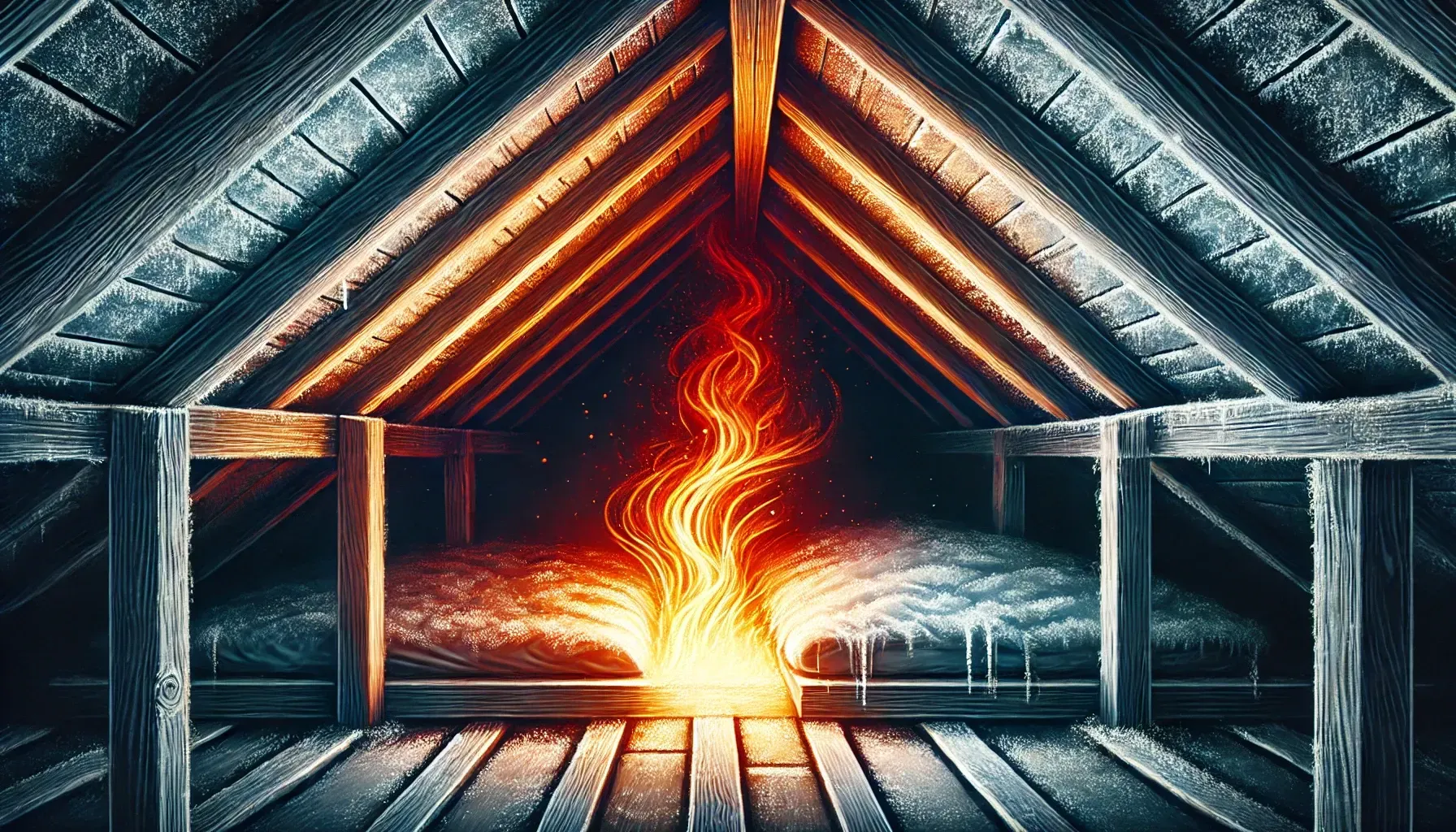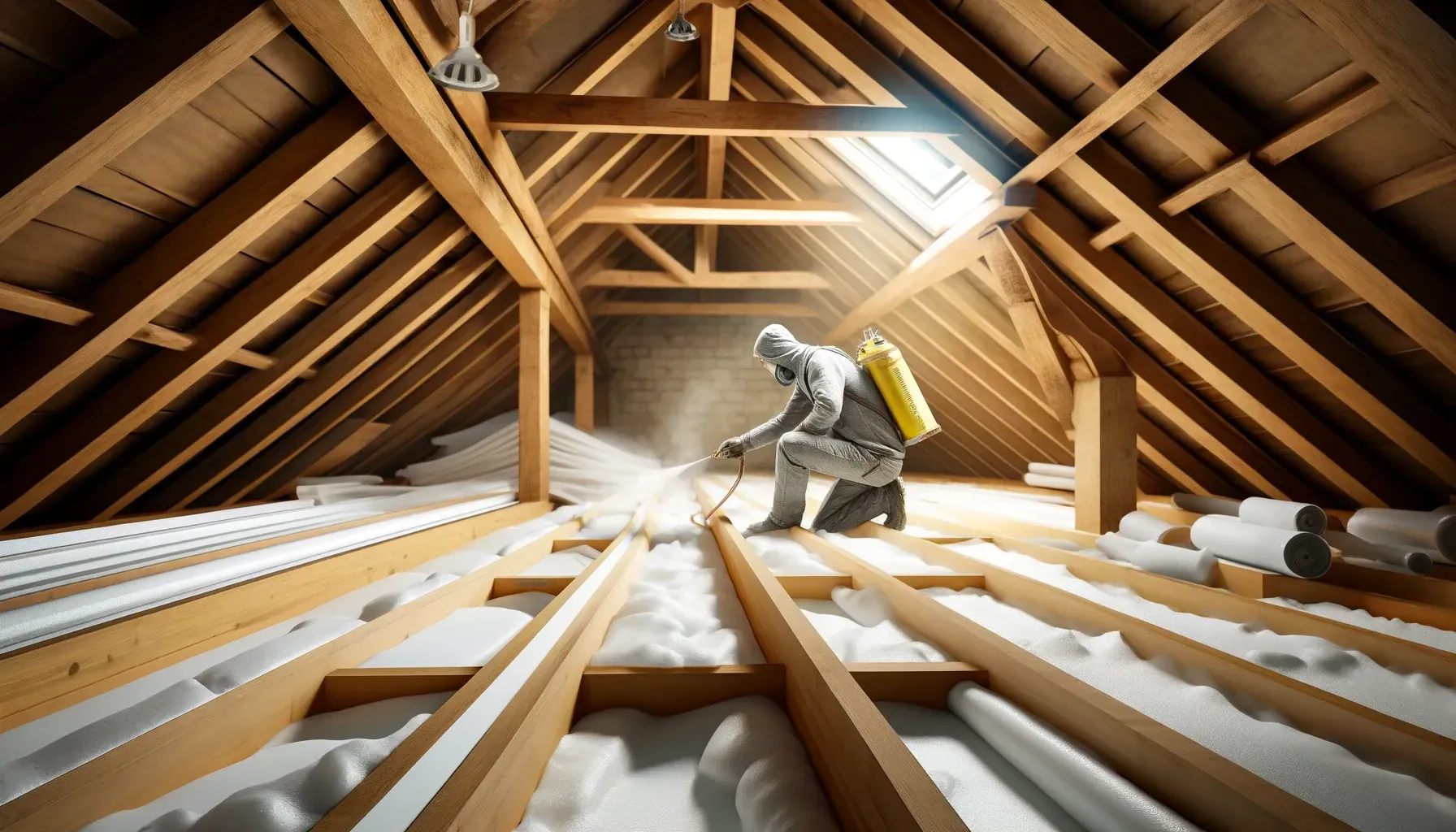Identifying Roof leaks, Attic ventilation, Sealing gaps, Insulating to prevent moisture
Comprehensive Guide to Roof Waterproofing: Prevent Leaks, Moisture, and Attic Condensation for a Safer Home
Hello there, Philly homeowners (and our Jersey and Pennsylvania neighbors)! Let’s face it: our homes are our sanctuaries, and the last thing we want is to feel like we need an umbrella indoors.
Roof leaks, attic condensation, and moisture issues can quickly turn our cozy nests into soggy messes. Fear not, though!
At Philly Foundation Repair & Waterproofing, we've got your back with a bit of humor to guide you through keeping your roof and attic dry, snug, and sound. Let’s dive in, shall we?

Why Does My Attic Have Condensation?
Imagine this: it’s the middle of winter in Philly. You’ve got the heat cranked up to combat the bitter cold outside, but unbeknownst to you, warm air is creeping into your attic. Warm air meets the icy-cold underside of your roof, voilà, condensation!
Attic condensation happens because of poor ventilation, insufficient insulation, or a combination of both.
Think of your attic like a secret club. If it’s not ventilated properly, it gets stuffy. That stuffiness leads to moisture build-up, which eventually manifests as those annoying drips or musty smells.
Quick Stat:
According to the EPA, 40% of moisture issues in homes originate in the attic or roof. A poorly insulated attic is a surefire way to invite condensation problems.
In-depth Causes of Condensation:
Temperature Fluctuations: Philly winters are harsh, and the temperature differential between your heated living space and cold attic creates the perfect storm for condensation. Without proper barriers, this becomes an ongoing issue.
High Humidity Levels: Indoor activities like boiling water, running humidifiers, and even house plants contribute to higher moisture levels. These activities might seem harmless but can lead to significant condensation when combined with poor attic insulation.
Lack of Ventilation Solutions: Houses without ridge and soffit vents struggle to maintain a balanced airflow. This stagnant environment encourages moisture to linger.
What Causes Attic Condensation?
Let’s break it down into bite-sized, relatable chunks:
Poor Ventilation: Picture a sweaty gym sock. Gross, right? Now imagine that sock is your attic with no airflow. Without vents to circulate fresh air, moisture gets trapped, turning your attic into a swampy mess.
Solutions: Installing ridge vents, soffit vents, and even exhaust fans ensures a steady airflow, helping combat excessive moisture.
Inadequate Insulation: If your attic insulation is spotty or outdated, warm air from your living spaces will creep in. The contrast between warm indoor air and cold roof surfaces creates condensation.
- Pro Tip: Invest in spray foam or cellulose insulation for better coverage and efficiency.
Roof Leaks: Sometimes, what looks like condensation is actually water sneaking in through roof leaks. (More on how to find those pesky leaks later!)
Reality Check: Even minor leaks can lead to significant water damage over time, so don’t delay repairs.
Household Activities: Did you know that everyday activities like cooking, showering, and breathing (yes, breathing!) release moisture into the air? Without proper barriers, that moisture ends up in your attic.
Fun Fact: An average family of four can release 2-4 gallons of water vapor per day just from regular activities!
How to Identify Attic Condensation
So, how do you know if your attic has condensation or is just being dramatic? Here are some telltale signs:
Water Stains: Look for dark or discolored patches on your attic’s wood or insulation. They’re like the attic’s way of crying for help.
- Pro Tip: Check along the seams of the roof and around nails, where condensation tends to form.
Musty Odor: If your attic smells like your gym bag after a long day, you’ve got a moisture problem.
- Pro Tip: Place dehumidifiers or moisture absorbers in the attic to combat lingering dampness.
Frost Buildup: In winter, moisture can freeze on your roof’s underside. When it melts, it’ll drip right onto your stuff.
- Warning: Frost indicates a lack of ventilation, which could damage roof shingles and insulation.
Mold or Mildew: Spotting black or green fuzz? That’s mold. It’s a big red flag that moisture levels are too high. Mold remediation should be handled promptly by professionals to ensure safety.
How to Stop Condensation in Your Attic
Stopping attic condensation is like playing detective, you need to identify the root cause and address it. Here’s the game plan:
Improve Ventilation: Install soffit and ridge vents to keep air circulating. Think of them as your attic’s lungs. Without them, it can’t breathe.
- Additional Tips: For older homes, consider installing gable vents or powered attic fans for supplemental airflow.
Upgrade Insulation: Proper attic insulation prevents warm air from entering your attic. Bonus? It also cuts down on your energy bills. Attic insulation cost can vary, but think of it as an investment in your home’s health.
- Stat: Homeowners can save up to 20% on energy bills with adequate insulation.
Seal Gaps: Use caulk or weatherstripping to close off gaps around plumbing vents, light fixtures, and other openings where warm air can sneak in.
- DIY Tip: Use expanding spray foam for larger gaps and cracks.
Moisture Barriers: Consider installing vapor barriers under your insulation to keep moisture at bay.
- Pro Insight: Use a polyethylene sheet with a permeability rating of less than 1.
How Do I Find Where My Roof is Leaking?
Roof leaks are like playing hide-and-seek with a toddler who’s really good at it. But don’t worry, we’ve got tips:
Check the Attic: During daylight, look for sunlight streaming through the roof boards. If light can get in, so can water. Shine a flashlight to spot water stains or damp areas.
- Pro Tip: Mark these areas with chalk for easier identification during repairs.
Inspect During Heavy Rain: Look for drips or wet patches while it’s raining. Roof leaks in heavy rain are often more noticeable because the water will flow directly to the problem spot.
Detailed Method: Place a bucket under the leak to minimize damage while observing the flow of water to pinpoint the exact entry point.
Use a Garden Hose: On a dry day, have someone spray the roof with water while you watch from the attic. Focus on one section at a time.
- Extra Tip: Start at the bottom of the roof and work your way up, so you can narrow down the source of the leak more effectively.
Follow the Water Stains: Water travels along beams and rafters. Follow the trail to its origin point.
- Extra Tip: Pay close attention to areas around chimneys, skylights, and roof vents, as these are common culprits for leaks.
Inspect Shingles and Flashing: Step outside and check for damaged, curled, or missing shingles. Look for cracked or corroded flashing around vents and chimneys.
- DIY Warning: Only inspect your roof yourself if it’s safe. Use a sturdy ladder and avoid walking on a wet or icy roof.
Want to know in detail how to find and fix roof leaks? Check out our blog on this topic.
Sealing Gaps and Insulating to Prevent Moisture

Sealing gaps is like giving your home a warm, snug sweater. It keeps the bad stuff (like cold air and moisture) out and the good stuff (like heat) in. Here’s how:
Spot the Culprits: Check for gaps around windows, doors, attic hatches, and even recessed lighting. Inspect baseboards, electrical outlets, and ductwork for hidden air leaks.
- DIY Tip: Light a candle near potential gaps and watch for flickering. This can indicate air movement.
Seal with Care: Use spray foam or weatherstripping to seal these gaps. It’s quick, easy, and oddly satisfying. Caulk works wonders for smaller cracks, while foam insulation is better for larger voids.
- Pro Tip: For added durability, opt for silicone caulk, which is resistant to moisture and temperature fluctuations.
Insulate, Insulate, Insulate: Layer your attic with high-quality insulation. Not only does it stop moisture, but it also keeps your energy bills from skyrocketing. Consider fiberglass batts, spray foam, or blown-in cellulose.
- Expert Insight: Focus on attic floors and walls. Don’t forget to insulate pipes and ductwork to prevent condensation on cold surfaces.
Vapor Barriers: Install vapor barriers beneath insulation to keep moisture out. These can be especially useful in older homes prone to dampness.
- DIY Note: Ensure the vapor barrier is installed on the warm side of the insulation to trap moisture effectively.
How to Eliminate Moisture Problems and Prevent Attic Condensation
Here’s the ultimate checklist to keep your attic moisture-free:
Regular Inspections: Check your attic and roof at least twice a year for signs of leaks or condensation. Use a moisture meter to assess humidity levels.
- Seasonal Tip: Focus inspections after heavy rains or during seasonal transitions when condensation is most likely to form.
Install and Maintain Ventilation Systems: Add ridge vents, soffit vents, and attic fans to maintain consistent airflow. Clean existing vents regularly to prevent blockages from dust or debris.
Use a Dehumidifier: Place a dehumidifier in your attic if you notice high humidity levels. Set it to maintain a humidity level of 30-50%.
- Pro Suggestion: Consider smart dehumidifiers that adjust settings automatically based on ambient moisture levels.
Address Plumbing Issues: Ensure bathroom and kitchen exhaust fans vent outside, not into the attic. Inspect pipes for leaks that could introduce extra moisture.
Upgrade Insulation and Sealing: Add high R-value insulation and seal all gaps. This step reduces heat transfer and prevents condensation from forming on cold surfaces.
Monitor and Adjust: Keep an eye on attic humidity with a hygrometer and adjust ventilation or dehumidification as needed. Regular maintenance is key to long-term moisture control.
- Pro Tip: Keep a maintenance log to track changes in humidity and any repairs or upgrades made over time.
Conclusion: Keeping Your Attic and Roof in Tip-Top Shape
In conclusion, tackling attic condensation, sealing gaps, and identifying roof leaks doesn’t have to feel like an uphill battle.
With proper ventilation, insulation, and a keen eye for detail, you can transform your attic from a moisture magnet into a fortress of dryness and comfort.
At Philly Foundation Repair & Waterproofing, we’re here to make sure your home stays safe, dry, and cozy. Whether it’s heavy rain causing leaks or condensation creeping in during the winter, our team of experts has the tools and know-how to help.
Don’t wait until water damage takes its toll. Reach out to us today for a free consultation, and let’s get your attic and roof waterproofed, insulated, and ready to handle whatever Mother Nature throws your way. Because when it comes to your home, we’ve got you covered, literally!
Key Takeaways:
Identify Attic Condensation Early: Watch for signs like water stains, musty odors, frost buildup, or mold to address problems before they escalate.
- Importance of Proper Ventilation: Soffit and ridge vents are crucial for maintaining airflow and preventing moisture buildup.
- Upgrade Insulation: High-quality insulation with an R-value of 38 or higher helps keep warm air from entering the attic, reducing condensation.
- Seal Gaps for Efficiency: Caulk, spray foam, and weatherstripping effectively close gaps around windows, doors, and fixtures, preventing air leaks.
- Monitor Humidity Levels: Keep attic humidity between 30-50% using dehumidifiers or hygrometers to maintain a healthy environment.
- Find Roof Leaks: Use daylight, heavy rain inspections, or a garden hose to locate and fix roof leaks effectively.
- Address Problematic Areas: Flashing, shingles, chimneys, and vents are common sources of leaks, inspect them regularly.
- Vapor Barriers as Protection: Install vapor barriers on the warm side of insulation to trap moisture and protect against dampness.
- Regular Maintenance is Key: Seasonal inspections and prompt repairs can prevent long-term damage from condensation or leaks.
- Professional Help When Needed: Complex issues like mold remediation or extensive leaks require expert assessment and solutions.

